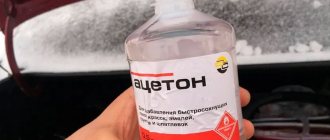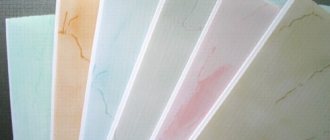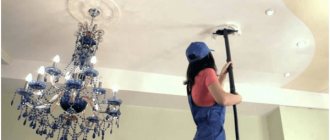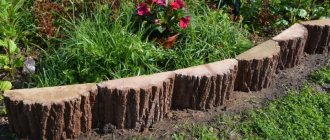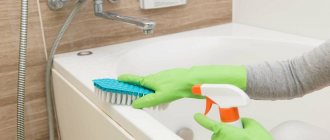Types of stains on linoleum
Before choosing what you can use to clean linoleum, you need to determine the type of contamination and know its characteristics:
- Grease is especially common on kitchen surfaces. If you wipe the stain right away, there may be no trace left. But stubborn fat is more difficult to remove.
- Black shoe streaks are a common problem in offices, school and hospital hallways. These could be streaks from rubber soles or shoe polish.
- Stains from iodine and brilliant green are inevitable within the walls of a hospital or in an apartment where children grow up. It's not easy to wash them off.
- Stains from construction and finishing materials, sprays of polyurethane foam may appear during repairs.
- Rust stains may appear under iron shelves or gas stoves.
- In a house where children live, linoleum can simply be covered with markers and pens.
Why doesn't every linoleum have stains?
There are different types of linoleums. More precisely, they have different top protective layers. It may be thicker or thinner. The longer linoleum is used, the worse the condition of the protective layer, which wears out over time.
Stains from such a coating will be extremely difficult to remove, since the dirt penetrates into the deeper layers.
Mistakes when cleaning linoleum
A dirty floor does not make anyone happy, and a damaged floor completely ruins the entire look of the apartment. It's easy to spoil it. It is enough to use baking soda or alkali, in particular baking soda, as a cleaning agent. After aggressive exposure, linoleum becomes brittle.
The use of solvents and bleaches is also wrong, as it damages the linoleum structure. Microcracks appear through which dirt penetrates inside, and it is no longer possible to wash it off.
- Another common mistake is the use of chlorine-containing products. They also damage the top layer and affect the color of the coating.
- You cannot wash linoleum with hot water, only warm water. It is better to use gel or shampoo as a detergent, but not powder, as it may contain abrasive particles.
Any new product should be tested on an inconspicuous area or piece of linoleum left after repairs.
Cleaning linoleum after repair
After replacing windows, wallpaper, ceiling trim, many stains of various origins remain on the floor: from glue, from paint, from polyurethane foam, from dirty soles and many others.
Washing linoleum after repair can be difficult, so it is easier to take preventative measures, for example, covering it with plastic, old sheets, or, at worst, newspapers or cardboard boxes.
If you still cannot protect the coating, you need to clean it step by step.
- Collect large debris, pieces of wallpaper, plaster, remove small debris with a broom and vacuum the floor.
- If the plaster has dried on the floor, you can remove it with a spatula.
- Wash stains from lime or water-based paint with soap and water. The water will have to be changed several times.
- If the paint does not wash off, use a solvent.
- Cut off the remaining polyurethane foam stuck to the floor with a knife as low as possible, and cover the rest with a wet rag. The foam will become wet and can be easily removed. Otherwise, you will have to resort to strong products to remove difficult stains.
You can wash linoleum from cement with warm water, soap and salt. The water should be warm. Dissolve 5-7 tablespoons of salt in a 10 liter bucket and add soap shavings (laundry soap will do). This solution also removes stains from lime and water-based paints.
Removing traces from furniture
Furniture, both large and small (chairs, stools, bedside tables) leaves dents on the linoleum.
Over time, they become deeper; if no action is taken, cracks appear on the floor and torn areas appear. In this case, the coating must be partially or completely replaced.
To clean dents you should:
- take a metal ball of small diameter,
- roll it along the edges of the dents in the coating several times to remove the deformation.
If the marks have not completely disappeared, then you should take a regular hairdryer and select warm or hot air. Then heat the edges of the dent (5-10 seconds), and then run the ball over the unevenness again.
Old linoleum
Over the years, the top layer of the coating wears out, becomes less airtight, and dirt gets inside, which is difficult to deal with. In addition, old linoleum loses its shine. But there are ways to get it back.
Everyone is interested in how to clean old linoleum from dirt. If it is ingrained fat, you can try to melt it away. To do this, place several layers of paper towels or a soft cloth on the stain. Then iron the area with an iron or heat it with a hairdryer. The fat will be completely or partially absorbed. The main thing is not to touch the uncovered linoleum with the iron.
If shoe streaks remain on the linoleum and are not erased immediately, they become practically impossible to remove. Therefore, you should not delay removing them. You can remove streaks with gasoline.
Cleaning linoleum from green stuff is easier than it seems. It is enough to wet a napkin with hydrogen peroxide or camphor alcohol and act on the stain, although sometimes you have to spend several minutes on this.
We remove the mounting foam from the floor.
Sometimes, during repairs, polyurethane foam gets onto the linoleum. To get rid of it, first of all, you need to let it dry. You shouldn’t touch it until it’s dry; it’s much more difficult to remove it this way than when it’s dried out. But when the foam has dried, you can cut it off with a knife or other sharp object, but not under the “spine”, but only the top layer, removing which you will definitely not damage your linoleum. Then soak a rag in water and apply it to the remaining foam. Give the foam time to soak. And then remove it from the floor surface.
Removing polyurethane foam from linoleum.
If this does not help, then contact a hardware store. They have special products for cleaning surfaces from foam. After carrying out such actions, as always, wipe the floor clean.
How to make linoleum shine
You can restore the shine to old linoleum using traditional methods, for example, using milk. You need to mix it half and half with water and wash the floor with the solution. Then wipe it with a dry microfiber cloth to add shine.
The disadvantage of this method is that the shine disappears very quickly, and the procedure has to be repeated often.
- Shine can also be obtained using starch. It is enough to mix 2-3 spoons of powder with water or use a decoction of fresh potatoes to wash the floor.
- Linseed oil will also help renew the coating. Apply a few drops to a cloth and wipe the floor with it.
- If you wipe linoleum with drying oil from time to time, you don’t have to worry about destroying the top protective layer.
We use a melamine sponge to remove stains and dirt.
Lately, many people like to use a melamine sponge to remove stains and dirt. This sponge, without adding any chemicals or other folk remedies, can remove stains and dirt. To do this, you just need to moisten the sponge in water and wring it out, and then rub your stain.
Melamine sponge.
If you are unfamiliar with melamine sponge, then briefly we can say that it looks like a piece of light foam rubber, but in texture and feel it is a completely different material, hardness can be compared to glass or sandpaper, but upon contact with water the sponge becomes soft and pliable. Melamine is a synthetic material that resembles an eraser in action, only instead of a pencil, melamine rubs off even the most severe stains on surfaces made of various materials.
Before use, you need to place the sponge in a container with cold (do not heat the liquid) water, wait a few seconds until the product gets wet, and squeeze lightly several times. Now you can safely clean even the most difficult stains from wine, blood, and felt-tip pens.
Rough linoleum
This is one of the types of coating. Rough linoleum has a special texture, but its top layer also has a protective function. Many buyers are hesitant to choose this coating because they have no idea how to clean rough linoleum from stubborn dirt.
In fact, it won't be too difficult. It is not recommended to use this coating in the kitchen. It is enough to use a not too hard brush, the bristles of which will penetrate into all the recesses. You need to wash the floor with a warm soapy solution, without applying too much pressure with a brush. You need to move in the direction of the drawing.
An even more effective way is to clean rough linoleum using a washing vacuum cleaner. True, this will require special rotary attachments.
Using a steam cleaner correctly
When using a steam cleaner for cleaning, you must remember that it can only deal with water-soluble contaminants, such as greasy or limescale deposits, food stains, and street dirt.
Advantages of a steam cleaner:
- environmental friendliness;
- safety;
- does not require cleaning products - savings and health benefits;
- antibacterial effect;
- does not leave scratches or streaks.
The operating principle of any steam cleaner is based on treating a dirty surface with a jet of hot water steam and then removing the softened dirt using a nozzle. Stubborn stains can be pre-treated with acetic acid.
Alternative methods for cleaning linoleum
- You can use a regular eraser to wipe off the same stripes from the soles, if they are isolated.
- Traces of some markers can also be wiped off with an eraser.
- Match sulfur soaked in water can easily remove traces of ink.
If the question arises of how to clean white linoleum, you can use vinegar. It copes well with yellowness. And if you mix it with baking soda, you can remove iodine stains.
You can wash the tape off the linoleum after heating it with a hairdryer. The stain can be easily washed off even with wet wipes. For the same purpose, mastic is suitable, which must be applied to the stain and then wiped off the floor.
Stains on linoleum are not a reason to change it. It is enough to be smart and use popular advice that will tell you how to remove this or that contaminant.
How to clean animal urine and marks
Dog and cat urine is very difficult to clean up. Not so much traces as smell. Urine is a multicomponent liquid. The “components” have a persistent odor, since they are a special means of communication in the animal world. Moreover, when combined with materials, the components of dog and cat urine form persistent compounds, which often have their own special “aroma.” The situation is even worse with marks. Getting rid of this scent is even more difficult.
So what to do? Just hope that the urine has not soaked into the linoleum, otherwise the covering may need to be replaced. If possible, remove cat and dog urine from linoleum immediately. Alcohol and vinegar diluted with water will help with this. Remove the smell of vinegar with baking soda. Then we wipe the linoleum with clean water.
If cat or dog secretions leak inside, my gender, not mine, the smell will remain
Well, if there are no traces anymore, but the smell is still strong, there is only a drastic solution - replacing the coating. You also need to check the base on which the linoleum lay. If urine has leaked there, you will have to change the base. His smelling areas are so accurate.
Just in case, you can try cleaning cat urine from linoleum using odor neutralizers. They are sold in pet stores. They do not have their own smell, but must eliminate the existing one. We have no personal experience with using such products, so we cannot guarantee results.


